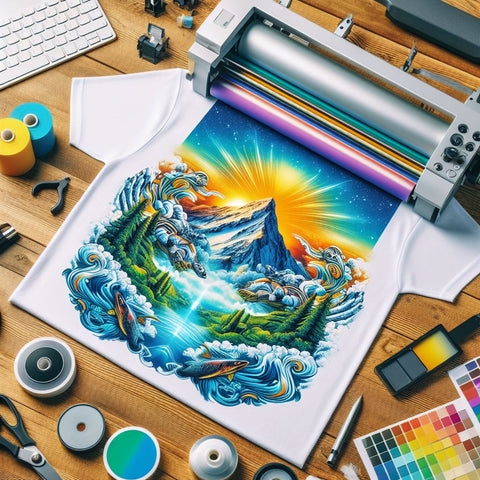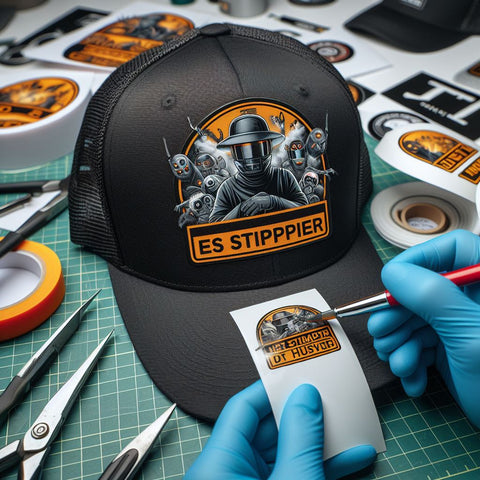Direct to Film (DTF) transfers have become increasingly popular in the world of custom printing, offering a versatile and cost-effective way to create stunning prints on various materials. However, to achieve the best results with DTF transfers, it’s essential to be aware of the common mistakes that can occur during the process. In this article, we will explore some key pitfalls to avoid when using DTF transfers for your custom t-shirts and other projects.
1. Not Preparing the Fabric Correctly
One of the fundamental steps in DTF printing is preparing the fabric or material onto which the transfer will be applied. Failure to properly clean and prepare the surface can lead to issues with adhesion and durability of the print. Make sure to follow the manufacturer's guidelines for prepping the fabric to ensure optimal results.
2. Using Incorrect Temperature and Pressure Settings
Temperature and pressure are crucial factors in DTF printing. Using the wrong settings can result in incomplete transfers, poor adhesion, or even damage to the material. It is essential to calibrate your heat press machine and follow the recommended temperature and pressure settings provided by the DTF transfer manufacturer.
3. Overlooking Image Resolution and Quality
High-quality images are essential for achieving crisp and vibrant DTF prints. Using low-resolution or poor-quality images can result in blurry or pixelated transfers. Always use high-resolution images and ensure they are suitable for DTF printing to achieve the best results.
4. Ignoring Layering and Registration Issues
When working with multi-color designs or layered prints, proper registration is vital to aligning the different layers accurately. Ignoring registration issues can lead to misaligned prints and a sloppy final product. Take the time to ensure proper registration and alignment before printing.
5. Rushing the Peeling Process
After the transfer has been heat pressed onto the fabric, allowing it to cool down before peeling is crucial. Rushing the peeling process can result in the print not adhering correctly or even peeling off entirely. Follow the recommended cooldown times before peeling off the transfer.
6. Neglecting Post-Processing Steps
Post-processing steps such as curing the print or washing the fabric after application are essential for the longevity of DTF prints. Neglecting these steps can result in fading or washing out of the print over time. Follow the recommended post-processing guidelines to enhance the durability of your DTF transfers.
7. Using Incompatible Fabrics
Not all fabrics are suitable for DTF printing. Some materials may not adhere well to the transfer, resulting in poor quality or failed prints. Make sure to test the compatibility of the fabric with DTF transfers before proceeding with the full printing process.
8. Not Testing Before Full Production
Before embarking on large-scale printing projects, it is essential to conduct test prints to ensure everything is working correctly. Testing allows you to identify any issues or adjustments that need to be made before production, saving time and resources in the long run.
9. Improper Storage of DTF Transfers
DTF transfers should be stored in a cool, dry place away from direct sunlight to maintain their quality. Improper storage conditions can lead to degradation of the transfers, affecting their adhesion and print quality. Store your DTF transfers correctly to preserve their integrity.
10. Skipping the User Manual
Always Read the User Manual
Many mistakes in DTF printing can be avoided by simply reading and following the user manual provided by the transfer manufacturer. The user manual contains valuable information on usage instructions, troubleshooting tips, and best practices for achieving optimal results with DTF transfers.
11. Disregarding Safety Precautions
When working with DTF transfers and heat press machines, it is essential to prioritize safety. Ignoring safety precautions can lead to accidents or injuries. Always wear appropriate protective gear, follow proper operating procedures, and ensure a safe working environment when using DTF printing equipment.
12. Conclusion: Mastering the Art of DTF Transfers
By avoiding these common mistakes and adopting best practices in DTF printing, you can elevate the quality of your custom t-shirts and prints. Remember to prepare your fabric diligently, calibrate your equipment accurately, use high-quality images, and follow proper post-processing steps. With attention to detail and practice, you can master the art of DTF transfers and create professional-quality prints for your projects.





Comments (0)
There are no comments for this article. Be the first one to leave a message!